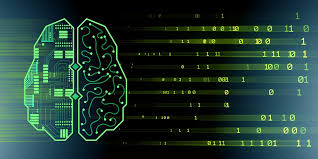Source: analyticsinsight.net
Machine learning has become omnipresent today with applications extending from precise diagnosis of skin diseases and cardiac arrhythmia to recommendations on streaming channels and gaming. However, in the distributed machine learning scheme, imagine a scenario where one ‘laborer’ or ‘peer’ is undermined. In what capacity can the aggregation framework be strong to the presence of such an adversary?
Across applications, the essential reason for ML is the same: A model is fed training data, in which it distinguishes the patterns important to play out a given task. Yet, is this cautiously curated condition forever what’s best for machine learning? Or then again are there increasingly viable methods? We may begin to address that question by taking a look at how people learn.
While classes in schools could be compared with the manner in which ML models get training information, students aren’t simply fed data and sent into the world to play out a task. They’re tried on how well we’ve discovered that data and remunerated or rebuffed in like manner. This may appear to be an especially human procedure; however, we’re now starting to see this sort of “learn, test, reward” structure produce incredible outcomes in ML.
Adversarial models are a decent part of security to take a shot at in light of the fact that they speak to a solid issue in AI safety that can be addressed to temporarily, and in light of the fact that fixing them is troublesome enough that it requires a serious research exertion.
When we consider the study of AI safety, we, as a rule, consider probably the most troublesome issues in that field, how can we guarantee that sophisticated reinforcement learning agents that are altogether wiser than individuals act in manners that their designers proposed. Adversarial examples give us that even simple modern algorithms, for both supervised and reinforcement learning, would already be able to act in astounding manners that we don’t expect.
One of the best methodologies for acquiring classifiers that are adversarially strong is adversarial training. A central challenge for adversarial training has been the trouble of adversarial generalisation Past works have contended that adversarial generalisation may just require a lot of information than characteristic generalisation. Researchers at DeepMind offer a simple conversation starter of if the labeled data essential, or is unsupervised data sufficient?
To test this, they have formalized two methodologies—Unsupervised Adversarial Training (UAT) with online targets and one with fixed targets. According to the test, the CIFAR-10 training set was first divided into equal parts, where the initial 20,000 models are utilized for training the base classifier and the last 20,000 are utilized to train a UAT model. Of the last 20,000, 4,000 models were treated as labeled, and the rest 16,000 as unlabeled.
These tests uncover that one can reach close to cutting edge adversarial robustness with as few as 4,000 labels for CIFAR (10 times less than the first dataset) and as few as 1,000 labels for SVHN (multiple times less than the first dataset). The creators additionally exhibit that their strategy can be applied to uncurated information acquired from basic web inquiries. This methodology improves the best in class on CIFAR-10 by 4% against the most grounded known attack. These discoveries open another road for improving antagonistic robustness utilizing unlabeled data.
One class of generative model that is utilizing this structure is generative adversarial networks (GANs). Like every single generative model, the objective of GANs is to demonstrate the distribution of a given dataset. So if that dataset is something like a collection of pictures, the GAN figures out how to make pictures that could be mistaken for part of that collection. The way GANs do this so well is on account of their two-network setup. These two networks comprise of the generator and the discriminator, which are the generative and adversarial components, respectively.
The objective of the discriminator is to effectively distinguish genuine samples and generated tests. To put it plainly, the discriminator is trained to discriminate between the two. In training, the discriminator is given both real and generated samples, which it endeavors to accurately classify. In the wake of training, the discriminator ought to have the option to play out a similar procedure on never-before-seen real and generated samples, consequently testing the exactness of the generator.
Adversarial examples are likewise difficult to guard against in light of the fact that they require machine learning models to deliver great yields for each conceivable input. More often than not, machine learning models work very well however just work on an extremely limited quantity of all the numerous potential inputs of info they may experience. Adversarial examples show that numerous cutting-edge machine learning algorithms can be broken in astounding manners. These disappointments of machine learning show that even basic algorithms can carry on uniquely in contrast to what their designers plan. It is important that machine learning analysts to get involved and design methods for forestalling adversarial examples, so as to close this gap between what designers expect and how algorithms behave.
